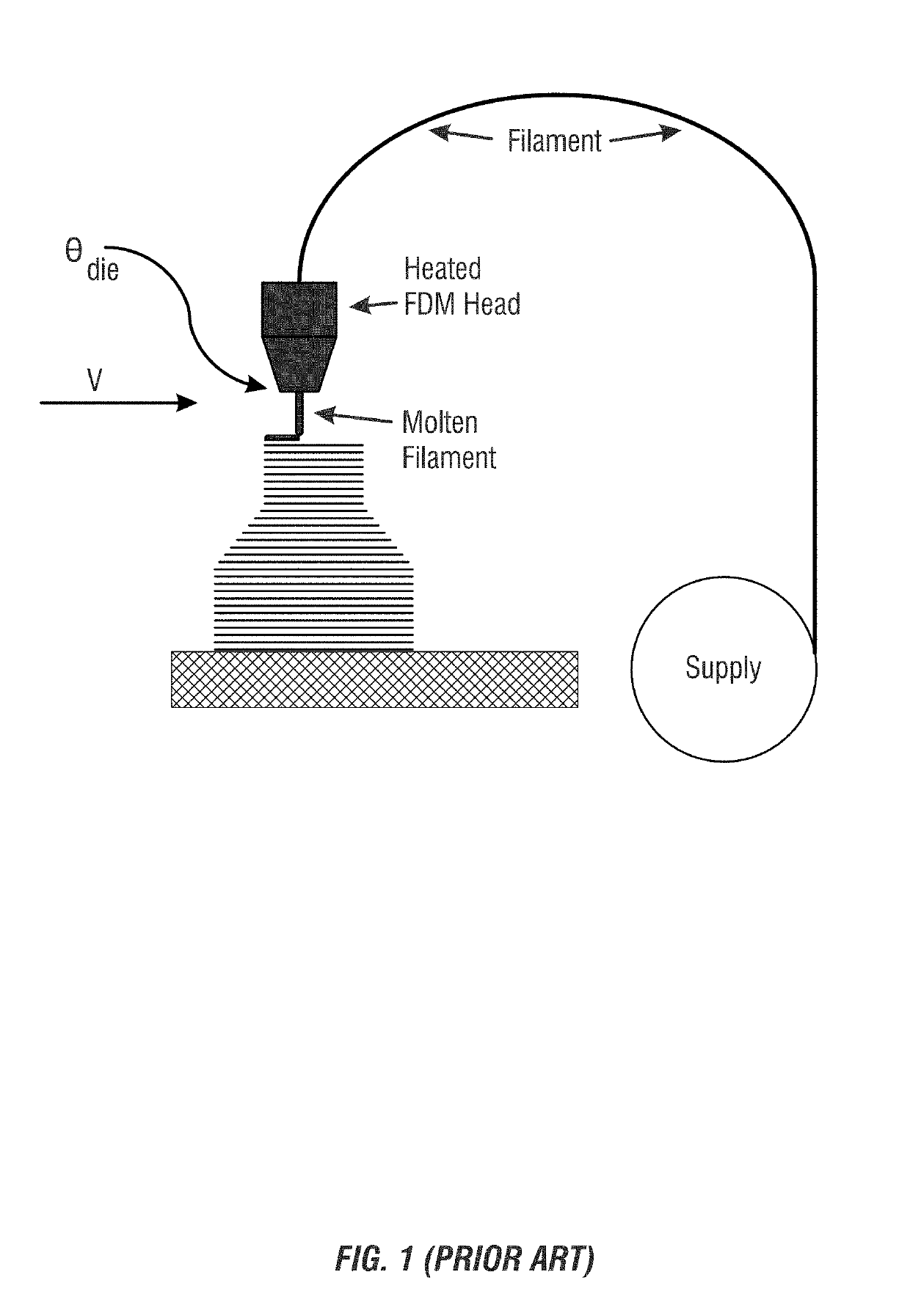Closed loop 3D printing
a closed loop, 3d printing technology, applied in the field of 3d printing, can solve the problems of limited control of interfacial healing, poor healing and weak parts, and the possibility of changing the temperature, so as to improve the weld quality of the component printed
- Summary
- Abstract
- Description
- Claims
- Application Information
AI Technical Summary
Benefits of technology
Problems solved by technology
Method used
Image
Examples
Embodiment Construction
[0031]The present disclosure is directed towards an apparatus, system, and / or method of 3D printing that provides for greater control in the heat of a filament that is added to a substrate. Controlling the heat of the filament will provide for optimal welding temperature between the filament and the substrate, which will result in a higher quality weld between the elements. As will be understood, the temperature of 3D printing has been shown, through models and testing, to be the biggest factor in achieving such a high quality weld. As previously disclosed, welding / healing of two polymer interfaces occurs either quickly at a relatively high temperature, or slowly at a relatively low temperature, because interfacial healing is a diffusion process. By using Einstein's diffusion equation, where D is the diffusion coefficient, it is possible to show that healing is related to time to a power of ¼, such that X˜t1 / 4. If it is assumed that intermolecular diffusion and healing are proportio...
PUM
| Property | Measurement | Unit |
|---|---|---|
| diameter | aaaaa | aaaaa |
| velocity | aaaaa | aaaaa |
| wavelength | aaaaa | aaaaa |
Abstract
Description
Claims
Application Information
 Login to View More
Login to View More - R&D
- Intellectual Property
- Life Sciences
- Materials
- Tech Scout
- Unparalleled Data Quality
- Higher Quality Content
- 60% Fewer Hallucinations
Browse by: Latest US Patents, China's latest patents, Technical Efficacy Thesaurus, Application Domain, Technology Topic, Popular Technical Reports.
© 2025 PatSnap. All rights reserved.Legal|Privacy policy|Modern Slavery Act Transparency Statement|Sitemap|About US| Contact US: help@patsnap.com



